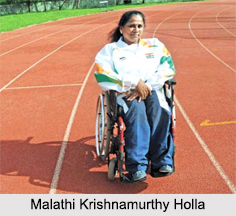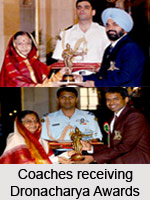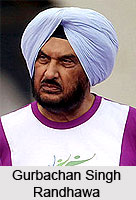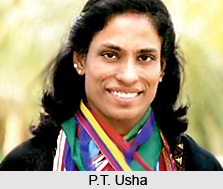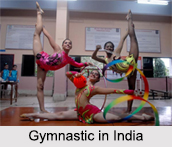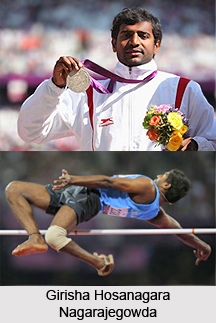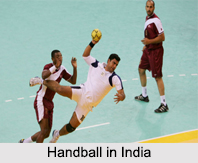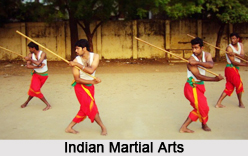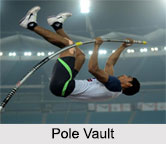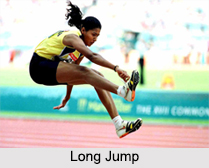 Jumping is a sport that is a part of Olympic events from a very early stage. There are various types of jumping events that can be categorized. Jumping in Indian Athletics became popular in the mid 19th Century with the advent of colonial rule. In contemporary age, skydiving and bunjee jumping are now included in adventure sport activity. Here, some of the types are discussed below, which are enlisted in Olympics Games, Commonwealth Games and Asiads.
Jumping is a sport that is a part of Olympic events from a very early stage. There are various types of jumping events that can be categorized. Jumping in Indian Athletics became popular in the mid 19th Century with the advent of colonial rule. In contemporary age, skydiving and bunjee jumping are now included in adventure sport activity. Here, some of the types are discussed below, which are enlisted in Olympics Games, Commonwealth Games and Asiads.
Long Jump in Indian Athletics
Long Jump happens to be one of the ancient forms of track event with its roots as one of the events within the ancient Greek pentathlon contest. The athletes, in order to gather the initial momentum, would take a squat run up and jump into an area of dug up earth. The one who jumps the furthest is the winner. In some cases light weights were held in each hand during the jump then swung back and dropped near the end in order to gather the extra distance and momentum. Although no weights are used in the modern day long jump, the rules were standardized in USA and England in and around 1860. Athletes run along a length of track that leads to a jumping board and sandpit. The athlete jumps before the marked line (crossing it would lead to disqualification) and their achieved distance is measured from the nearest point of sand that was disturbed by body of athlete. The men`s long jump featured in the first Olympics and the women`s competition was introduced from 1948 Summer Olympics. Professional long jumpers typically possess a strong sprinting and acceleration abilities. Kumaravel Premkumar and Ankit Sharma are the newest long jumpers from India participating in all regional and international competition.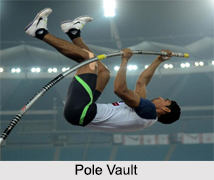
Triple Jump in Indian Athletics
This jump is very similar to long jump and takes place on a track heading towards a sandpit. Traditionally athletes would leap on the same leg twice before actually jumping into the pit. But from 1900 onwards, this has changed to the current "hop, step and jump" pattern. Renjith Maheswary and Anju Bobby George are the triple jumpers participating in world athletics.
High Jump in Indian Athletics
The first evidence of high jump competition can be traced back to the 19th century Scotland. Further the competition was organized in England during 1840 and the basic rules of the game were standardized there in 1865. The men`s high jump event was introduced in 1896 Olympics and women`s competition soon followed in 1928. Tejaswin Shankar shows his excellence in high jumps.
Pole Vault in Indian Athletics
The game where the use of pole is required for vaulting distances were first recorded in Europe. And it was considered as a gymnastic event in Germany. The basic rules and the techniques of the pole vault event originated in USA. The rule of the game requires that athletes do not move their hands along the pole and athletes began clearing the bar with their feet first and twisting so that the stomach faces the bar. Bamboo poles were introduced in the 20th century and a metal box in the runway for planting the pole became standard. In the mid-20th century the landing mattresses were introduced to protect the athletes who were clearing increasingly greater heights. V. S. Surekha and Dhirendra Kumar made their records in pole vaults in Olympics and Asiads.
This game has been a part of Olympic Games since 1896 for men and about 100 years later the woman version was introduced as well.





